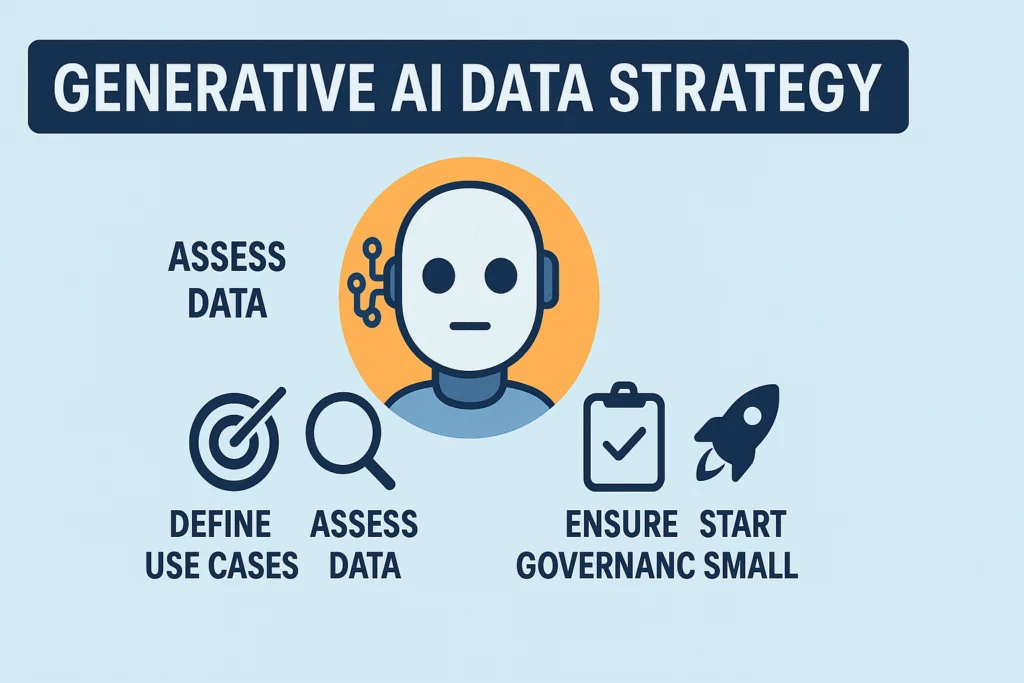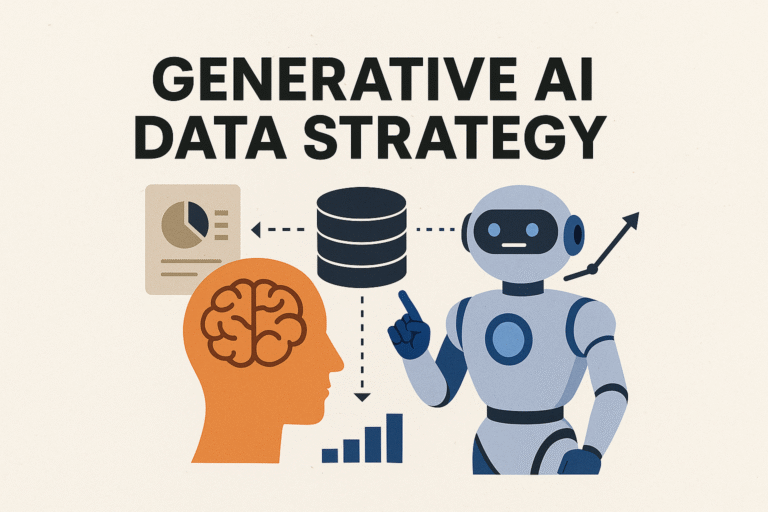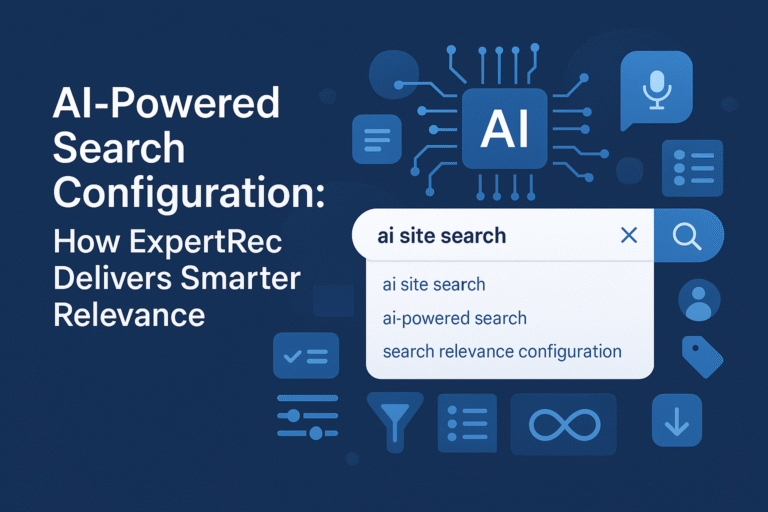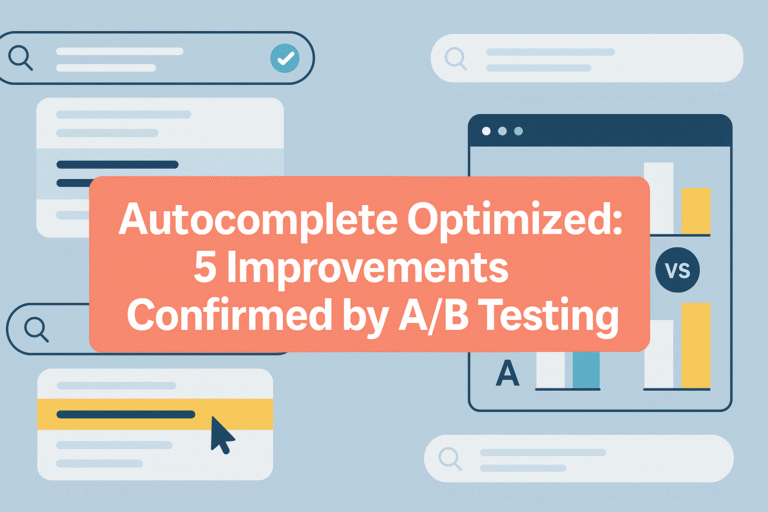Generative AI is reshaping the digital experience—enabling businesses to deliver dynamic content, natural language responses, and personalized interactions at scale. But behind every successful Gen-AI application lies a critical foundation: a robust and well-structured data strategy.
A generative AI data strategy involves more than just collecting vast amounts of data. It’s about curating, organizing, contextualizing, and securing that data to train, prompt, and fine-tune large language models (LLMs) in a way that delivers value—without sacrificing performance or compliance.
In this blog, we’ll explore the core components of a generative AI data strategy, its value for enterprises, potential challenges, and how platforms like Expertrec help simplify and accelerate AI transformation through structured search, RAG (retrieval-augmented generation), and secure AI deployment.

Why Generative AI Needs a Data Strategy
Generative AI systems generate responses, summaries, or content using LLMs trained on massive datasets. However, enterprise use cases demand grounding—meaning the AI’s output must be rooted in your private, structured data (products, FAQs, documents, support tickets, etc.).
Without a proper data strategy, generative AI implementations risk:
- Producing hallucinated or incorrect outputs
- Failing to meet compliance or privacy standards
- Delivering inconsistent user experiences
- Performing poorly due to lack of contextualization
- Failing to scale across multilingual or domain-specific contexts
Key Pillars of a Gen-AI Data Strategy
- Data Quality and Normalization
Consistent formatting, deduplication, and metadata tagging are essential. LLMs need clean, structured input for meaningful results. - Knowledge Graphs and Taxonomies
Structured ontologies, category hierarchies, and entity relationships enrich semantic understanding, improving retrieval and generation quality. - Real-Time Data Pipelines
Dynamic content like pricing, stock availability, or documentation updates must feed into the AI layer without latency. - Embedding and Vector Indexing
Textual content is transformed into dense vector embeddings, enabling semantic search and contextual retrieval—a key enabler for RAG. - Prompt Engineering and Template Management
Data must be contextualized into well-structured prompts. Prompt templates should dynamically reference product specs, document excerpts, or knowledge base items. - Access Control and Compliance
AI should only access data the user is authorized to see. Enterprise-grade encryption, role-based access, and audit logs must be built into the strategy.
Is Investing in a Generative AI Data Strategy Worth It?
The short answer is yes, especially for businesses operating in data-rich, customer-centric environments.
Benefits:
- Improved Search Relevance: Semantic and intent-based search improves conversions and satisfaction.
- Personalized Interactions: LLMs can tailor responses based on user profiles and behavioral data.
- Automation and Efficiency: AI-generated summaries, answers, and content reduce manual workload.
- Scalability: Handle multilingual, multi-domain, or multi-brand deployments without scaling human teams.
- Insight Generation: LLMs can generate internal reports, auto-tag content, and even suggest product gaps based on query patterns.
Challenges:
- Cost: Training and running AI models, especially large-scale deployments, can be expensive.
- Complexity: Integrating structured search, vector search, and Gen-AI requires engineering expertise.
- Governance: Preventing data leaks, IP misuse, and compliance violations demands strict controls.
- Latency and Performance: Real-time use cases need low-latency infrastructure and optimization.
For organizations without deep ML/AI infrastructure, building this from scratch may not be viable. Instead, AI-native search platforms like Expertrec offer a much faster, scalable, and secure path.
Expertrec: Your Platform for Generative AI-Ready Search
Expertrec enables enterprises to implement Gen-AI capabilities without having to build and manage the full AI stack. Here’s how:
1. Retrieval-Augmented Generation (RAG) Out-of-the-Box
With Expertrec, you can combine LLMs with structured or unstructured content via semantic vector indexes. This grounds AI output in real, verifiable data.
2. Customizable Prompt and Context Engine
Use Expertrec’s prompt management tools to inject structured data (product attributes, document fragments) into Gen-AI interactions dynamically.
3. Built-In Data Governance and Privacy
Expertrec supports on-premise and private cloud deployments, ensuring that sensitive enterprise data stays secure and compliant.
4. Real-Time Data Sync + Vector Indexing
Changes in your catalog, support portal, or CMS are reflected immediately in your AI layer. Expertrec auto-generates embeddings and syncs indexes on the fly.
5. Multilingual and Domain-Specific Support
Expertrec fine-tunes embeddings and AI outputs based on your domain—whether ecommerce, B2B SaaS, education, or finance.
6. Developer-Friendly APIs + No-Code UI Tools
Whether your team prefers low-code interfaces or wants full API access, Expertrec adapts to your workflow and architecture.
Final Thoughts: Data-Driven AI Starts with Strategy
Building an effective generative AI system is not just about choosing the right model. It’s about ensuring that your data pipeline—from collection to indexing to inference—is optimized for relevance, governance, and real-world use cases.
A strong Gen-AI data strategy is the foundation of any scalable AI initiative.
With Expertrec, organizations can go beyond experimentation and deploy real-time, secure, and personalized Gen-AI-powered search systems with minimal overhead. Whether you’re building chat interfaces, smart search, product discovery, or knowledge bots—Expertrec provides the core infrastructure to make it happen.
FAQs on Generative AI Data Strategy
It’s a structured plan for collecting, managing, and leveraging data to power generative AI applications like smart search, chatbots, and dynamic content generation.
2. Why is a data strategy important for Gen-AI?
Without a clear data strategy, Gen-AI outputs can be inaccurate, non-compliant, or irrelevant. Strategy ensures AI is grounded, secure, and aligned with business goals.
3. What types of data are needed for generative AI search?
Structured content (catalogs, metadata), unstructured documents (PDFs, blogs), user behavior logs, and contextual signals like session data.
4. How does Expertrec support a generative AI data strategy?
Expertrec handles everything from embedding generation, RAG integration, prompt management, to secure data hosting—enabling fast, enterprise-ready AI deployment.
5. Can Gen-AI be used for multilingual search?
Yes. With multilingual embeddings and LLMs, Gen-AI can understand and respond to user queries across multiple languages.
6. How do I ensure privacy and compliance in a Gen-AI system?
Choose platforms like Expertrec that offer role-based access, encryption, on-premise hosting options, and audit logs to stay compliant with data protection regulations.




